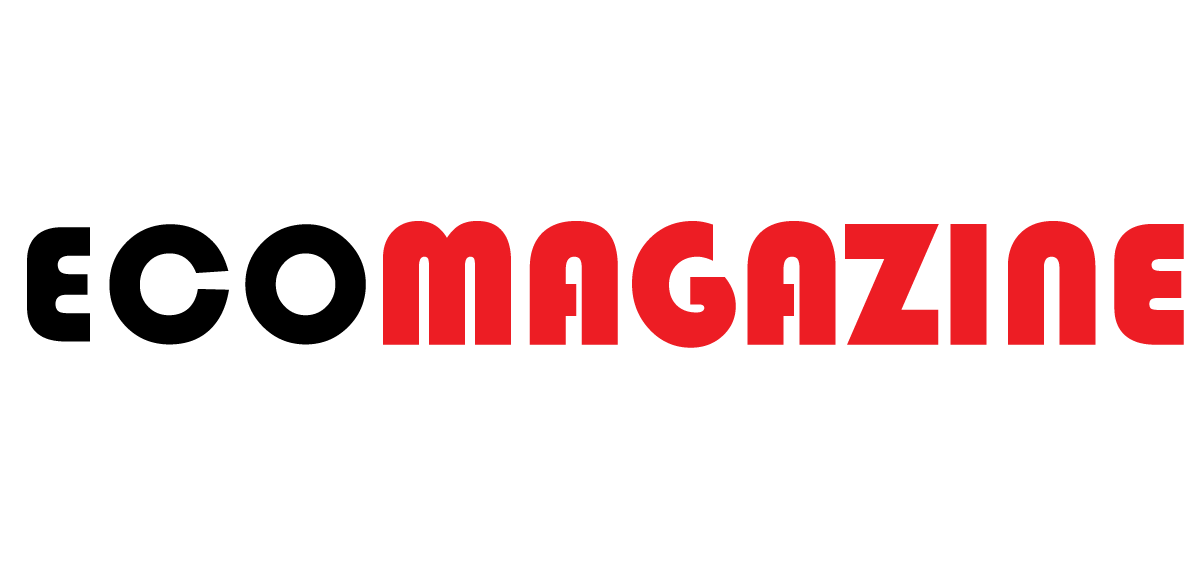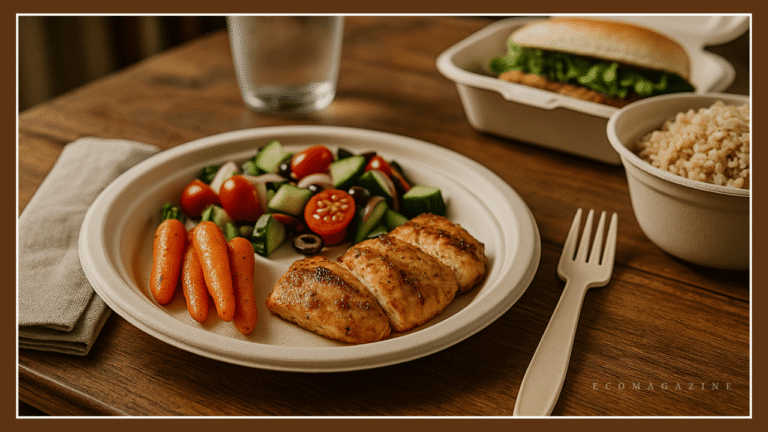Inside the rise of sugarcane fiber packaging and why Chinese manufacturer Bioleader® is leading the global shift toward compostable innovation
A Morning at the Café: The Moment Sustainability Becomes Personal
It’s 8:30 a.m. in London. The café line is long, the barista’s playlist is gentle jazz, and customers hold takeaway lattes in compostable cups. But under each croissant and breakfast sandwich lies something new — a plate that isn’t plastic, paper, or foam.
It’s made of bagasse — the dry, fibrous residue left after sugarcane juice extraction. It looks elegant, feels sturdy, and composts back to soil in less than three months.
This small, unassuming change is part of a massive global transformation. Around the world, governments, restaurants, and consumers are rethinking what their food comes in — and sugarcane bagasse tableware has quietly become the front-runner of this packaging revolution.
The global market for molded fiber tableware is expected to reach USD 12.1 billion by 2030, driven by bans on single-use plastics and a rising demand for circular materials. Yet, behind the smooth white surface of every bagasse plate or bowl lies a remarkable story of science, sustainability, and supply chain innovation — a story companies like Bioleader® have mastered.
The Science of Bagasse: Turning Agricultural Waste into Everyday Utility
Bagasse is what’s left after extracting juice from sugarcane — a renewable byproduct that was once burned or discarded. But through advanced pulp molding and sterilization, it’s now being re-engineered into durable tableware that’s heat-resistant, water-tight, and food-safe.
A single ton of sugarcane produces about 280 kilograms of bagasse, meaning countries like India, China, and Brazil — global sugarcane leaders — are sitting on abundant, renewable feedstock for sustainable packaging.
Bioleader® has turned this into an opportunity, engineering high-performance sugarcane bagasse tableware that meets strict certifications such as EN13432, OK Compost, and FDA Food Contact Safety.
How Bagasse Outperforms Plastic and Paper
Environmental scientists have long debated the “true cost” of disposable packaging. Life-cycle assessments (LCA) show bagasse tableware outperforms petroleum-based plastics and even coated paper in multiple impact categories:
| Material | Decomposition Time | Compostability | Carbon Footprint (kg CO₂e/unit) | Heat Resistance | Water/Oil Resistance |
| Plastic (PP/PS) | 400–500 years | ❌ | 2.5 | 90°C | Excellent |
| Coated Paper | 5–10 years | Partial | 1.2 | 80°C | Medium |
| Bagasse | 60–90 days | ✅ 100% | 0.7 | 120°C | Excellent |
Bagasse not only decomposes faster but also reduces dependence on wood pulp. Compared to standard paper, bagasse uses 70% less energy and emits 60% less CO₂ during production.
In other words, every bagasse plate or bagasse food container is not just a product — it’s a carbon-saving statement.
The Bioleader® Breakthrough: Sustainability with Scalability
Founded in Xiamen, China, Bioleader® has become one of Asia’s most respected biodegradable tableware manufacturers. What sets it apart isn’t just scale — it’s integration.
The company controls every stage of production:
- Raw Material Sourcing – Utilizing high-fiber sugarcane pulp with verified traceability.
- Precision Molding – Using high-pressure molding for perfect rigidity and heat tolerance.
- Quality Assurance – Every product batch passes microbial and tensile strength testing.
- Certifications – Complying with EN13432, ASTM D6400, LFGB, and FDA standards.
These systems allow Bioleader® to manufacture millions of compostable units monthly, serving global distributors, cafés, and major restaurant chains.
Among its product line, bagasse plates have become the most popular due to their versatility — available in 6″, 8″, 9″, and 10″ sizes with both single and compartment designs for portioned meals.
Real-World Case Study: How a Dubai Cloud Kitchen Cut Costs by 28%
A Dubai-based delivery kitchen serving 5,000 meals a day faced a growing challenge — plastic bans under the UAE’s sustainability initiative. Foam clamshells were no longer compliant, and paper boxes leaked under hot curries.
In early 2024, the brand switched to Bioleader’s bagasse clamshell boxes. The results were immediate:
- Zero leakage during 60-minute deliveries
- 28% reduction in packaging waste handling cost
- 15% improvement in customer reviews mentioning “eco-friendly packaging”
The switch didn’t just enhance compliance; it elevated brand perception. The restaurant soon expanded its green initiative to bowls, trays, and takeaway cups — all sourced through Bioleader®’s OEM service.
Circular Impact: Composting Bagasse Back into Soil
Unlike coated paper or bioplastic, bagasse requires no industrial degradation additives. In municipal composting systems, bagasse breaks down naturally within 12 weeks, leaving no toxic residue.
According to a 2024 study by the Hong Kong Polytechnic University, composted bagasse improves soil fertility by boosting nitrogen levels by 22% compared to control samples.
That means when you throw away a bagasse bowl after lunch, it can literally nourish the next generation of crops — completing the circle of sustainability.
The Consumer Mindset: Green Dining Goes Mainstream
A recent survey by Statista revealed that 73% of global consumers now consider eco-friendly packaging an important purchase factor. Millennials and Gen Z, in particular, are driving a “buy what you believe in” movement.
Restaurants, caterers, and meal-kit brands are responding accordingly. Compostable tableware isn’t just a regulatory obligation — it’s become a marketing differentiator.
Bioleader®’s bagasse tableware line resonates with this cultural shift by combining modern aesthetics with measurable environmental value. Each product carries clear labeling on compostability and food safety — ensuring end-users feel informed, not confused.
Inside Bioleader®’s Factory: Where Clean Manufacturing Meets Green Energy
At Bioleader’s 20,000-square-meter facility, production lines run 24/7 using partially solar-powered systems. Wastewater is recycled, and all pulp residues are reused in low-grade molded fiber applications.
The company’s zero-burn policy for defective units ensures no off-spec products end up in landfills. Instead, they’re pulped back into production — a model of circular economy in practice.
Beyond compliance, Bioleader® partners with research institutions in Fujian and Guangdong to enhance the performance of molded bagasse — experimenting with biopolymer coatings and pulp hybridization for next-generation strength and barrier protection.
The Global Shift: Policy Meets Innovation
From the EU’s Packaging and Packaging Waste Regulation (PPWR) to Canada’s Single-Use Plastics Prohibition Regulations, governments are setting aggressive timelines to phase out fossil-based packaging.
The ripple effect is global — export buyers now demand suppliers with verifiable compostability certifications and lifecycle transparency.
Bioleader® anticipated this early. Its bagasse food containers and bagasse clamshell boxes already comply with EU and North American import standards, making them future-proof for the next decade of trade regulations.
Expert Insights: Why Bagasse Is Here to Stay
Dr. Elaine Carter, environmental materials scientist at Cambridge University, explains:
“Bagasse represents a perfect intersection between renewable sourcing and material performance. It’s not just biodegradable—it’s industrially scalable, which is what sustainability truly needs.”
Similarly, packaging consultant Marco Silva notes:
“When a product like Bioleader’s bagasse containers achieve both compostability and cost efficiency, they stop being an alternative—they become the standard.”
The Bioleader® Promise: Responsible Manufacturing, Global Reach
Bioleader® isn’t merely a supplier; it’s an ecosystem partner for brands transitioning toward zero-waste operations. Its OEM/ODM services offer:
- Custom logo printing and packaging
- Multi-SKU mixed container loading for wholesale buyers
- Global logistics support through ports in Xiamen and Shenzhen
The company’s client base now spans Europe, North America, the Middle East, and Asia-Pacific, with a growing number of QSR chains adopting its packaging solutions.
By providing reliable, certified products, Bioleader® is empowering thousands of restaurants and retailers to align business growth with sustainability goals.
Conclusion: The New Standard of Sustainability
The next time you enjoy a takeaway meal on a bagasse plate, remember — it’s more than just packaging. It’s a symbol of transformation: from agricultural waste to global climate solution.
And companies like Bioleader® are proving that innovation, scale, and environmental responsibility can coexist.
The world doesn’t need more plastic. It needs smarter design, cleaner materials, and businesses bold enough to lead the change. Bioleader® is one of them — and the world is taking notice.


